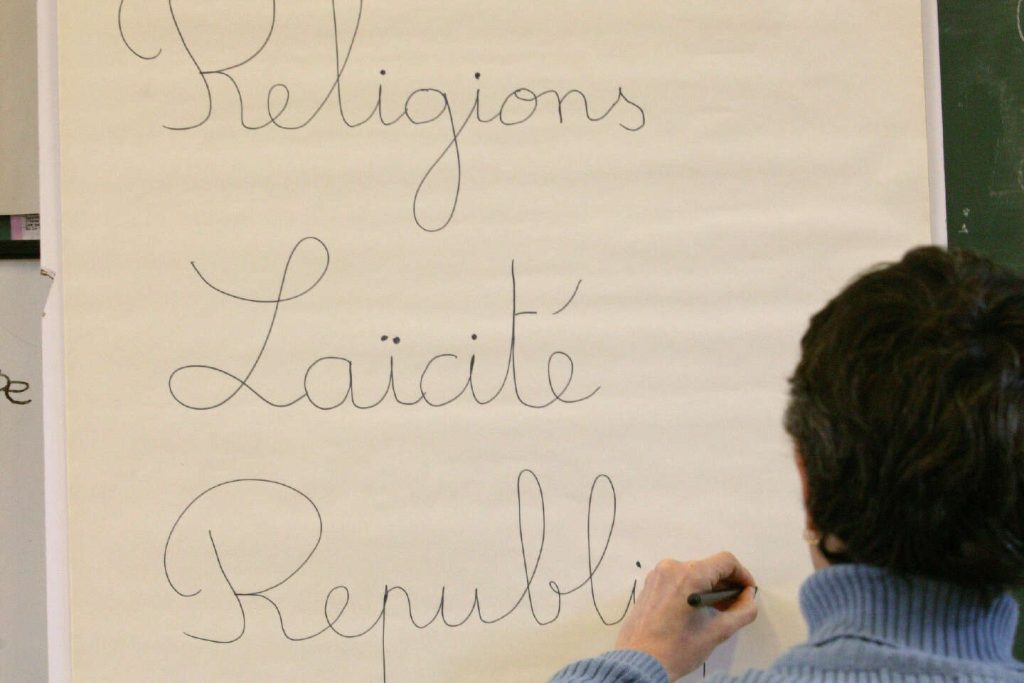The law of March 15, 2004 prohibits the wearing of signs or clothing that demonstrate a religious affiliation in public schools, colleges, and high schools, not ostentatious religious signs themselves, but the overt manifestation of a religious affiliation. The law applies to signs or clothing that immediately identify an individual’s religious affiliation. It is designed to apply to all religions and to address the emergence of new signs or attempts to circumvent the law. The law of 2004 was enacted in accordance with the principle of secularism in France, as noted by the Constitutional Council, the Council of State, and the European Court of Human Rights, and is in line with the principles outlined in the 1905 separation of church and state law.
The law of December 9, 1905, which separates churches and the state, created a distinction between the public sphere (that of the common interest) and the private sphere (that of individual and collective interests). The French Republic has chosen not to replace revealed religions with a secular religion, but rather to establish a national “living together” based on shared values. The 2004 law only imposes restrictions within the public sphere. The public sphere should not be confused with the public space, which includes public roads and areas open to the public or allocated for public services. Individuals have the freedom to dress within these spaces, with exceptions relating to exhibitionism and, since 2010, face coverings.
The separation of church and state law protects two fundamental freedoms outlined in its first article: “freedom of conscience” and “free exercise of worship.” These rights encompass religious freedom, the freedom to believe, not to believe, and to change religions. The Constitution establishes France as a “secular Republic,” which implies the neutrality of the state and public services. This neutrality ensures equal treatment among citizens and users, allowing them to express their religious beliefs within the limits of respecting public service neutrality, its laws, proper functioning, and public order imperatives.
The law is neither discriminatory nor exclusionary. The law aims to maintain the principle of secularism, ensuring that individuals can freely practice their beliefs while respecting the boundaries of public service neutrality and the laws governing it. The law seeks to uphold the values of equality and respect for all citizens, regardless of their religious beliefs. The goal is to create a harmonious society where individuals can freely express their beliefs while respecting the principles of secularism and the common values that unite the nation.


